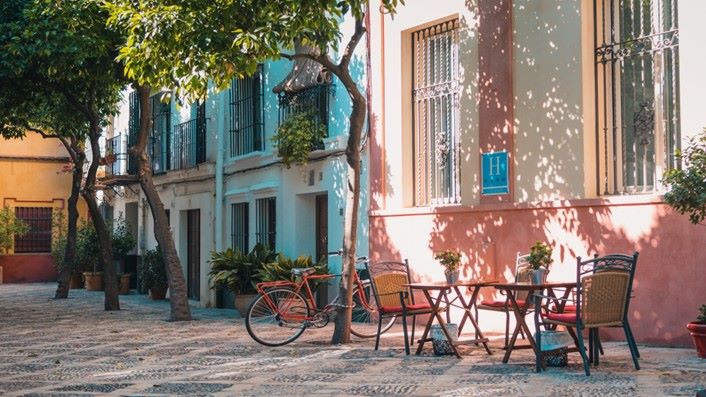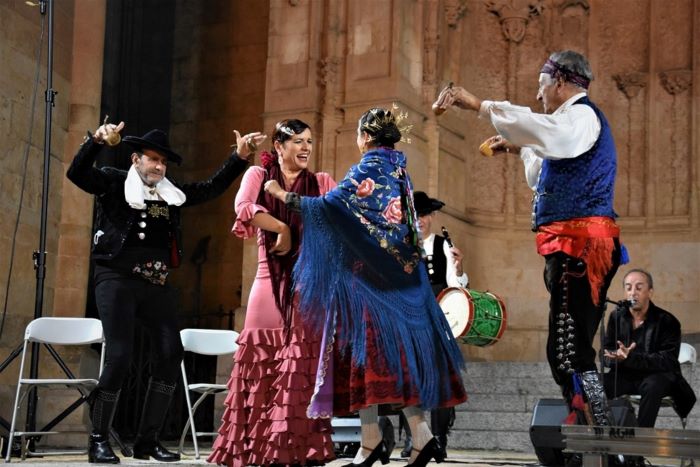
Besides its football teams, Spain is world-famous for its flamenco dancing, gothic architecture and lively cities. To enjoy the most of this beautiful city, though, you need to know when’s the best time to visit. There’s nothing worse than traipsing around beaches in the pouring rain or meeting huge crowds of holidaymakers everywhere you go.
Spain enjoys better weather than many other countries in Europe. However, it still has rainy seasons and months that are considerably colder than others. Some months can also get uncomfortably hot if you’re not used to it. If you’re looking for a pleasant climate, there are certain months and regions you should aim for.
There are also plenty of festivals and activities that occur each year. Whether you want to experience Holy Week in Madrid or attend a jazz festival in Seville, there’s so much to see and do.
Let’s jump straight into it and find out when’s the best time to visit Spain!
Contents
When are the best months to visit Spain?
Spring and Fall are typically considered the best times to visit Spain. The weather from March to May and September to November is warm but not extremely hot. There are also smaller crowds, and accommodation prices tend to be cheaper.
June, July, and August have the hottest temperatures. They also feature countless festivals throughout the country. However, these months tend to be the busiest, especially on the beaches. November through to February are usually the coldest months of the year and pretty quiet as a result.
Continue reading to find out what weather and events you can expect in Spain throughout the year.
What’s on in Spain throughout the year?
Summer
During the hotter months, Spaniards take their summer breaks in coastal regions where it’s cooler. A number of colorful festivals explode onto the scene with live music and joyous dancing. Many festivals are centered around Spain’s food and wine, so make sure you come with an appetite!
Granada in southern Spain hosts the International Festival of Music and Dance, one of the country’s largest art festivals. It’s mainly dedicated to flamenco, but plenty of other dance forms and music are on display too. Many of the festivities take place against the backdrop of the gorgeous Alhambra Palace.

Fall
Once the schools have returned, Spain becomes much quieter. The temperature also drops to a more comfortable level. You can enjoy looking around museums and historical structures without fighting with crowds and the burning sun.
Bienal de Flamenco, an annual celebration of flamenco, is held every September. This is one of Spain’s biggest festivals, featuring parades, fireworks, and concerts. Fiestas de San Mateo, a week-long grape and wine festival, is held in the same month. It celebrates the beginning of the grape harvest in Logroño, the capital of La Rioja in northern Spain.
Winter
As Spain’s off-season, there aren’t as many festivals and activities in winter as the rest of the year. Some beaches are closed, but this means you’ll likely find cheaper accommodation near them.
During November, jazz festivals are held in major cities across the country. The European Film Festival is also held annually in Seville. Fiesta de La Almundena is held every 9 November in Madrid, Spain’s largest city.
To celebrate, a procession snakes through the city, and participants leave flowers on the steps of the city’s cathedral in honor of the Virgin Mary.
December is a time for Christmas festivities and markets. The biggest markets are in larger cities such as Barcelona and Seville, but you can find plenty of smaller markets in most towns and villages. Three Kings’ Day is celebrated on 6 January and sees politicians dress up as the Three Kings and give out sweets to children.
Spring
Spain is a predominantly Catholic country and celebrates Easter with a number of events throughout Spring. Holy Week is typically observed in April during the last week of Lent. Catholic brotherhoods (called ‘Hermandad’ in Spanish) process through the streets in capes and distinctive hoods.
Festival de Jerez, yet another flamenco festival, is celebrated in March with dance performances and live music. Seville hosts a fair called Feria de Abril two weeks after Easter, which features carnival rides, music, and dancing.
What’s Spain’s climate like?
Spain’s south and east coasts have a predominately Mediterranean climate, whereas the northern region has an oceanic climate. The central inland areas tend to have a continental climate.
In 2022, the average temperature in July was 25.6°C (78°F), which was the highest average of the year. August was the second hottest month, with an average temperature of 24.7°C (76°F), and June had the third hottest temperature with 21.8°C (71°F).
January is the coldest time of year, with a recorded average of 6.4°C ( in 2022. The most dramatic temperature increase was from April (11.1°C/52°F) to May (18.1°C/65°F). Temperatures plummeted from 18°C (64°F) in October to 11.2°C (52°F) in November.

What is the rainiest month in Spain?
By far, the rainiest month in Spain is December. In 2022, an average monthly rainfall of 117.5 mm (4.6 in) was recorded. The next highest average was 103.8 mm (4 in) in March. July had the least rain, with a monthly average of 8.6 mm (0.3 in) across the whole country. February had the second lowest rainfall, with an average of 10.9 mm (0.4 in).
What time of year is Spain least busy?
Spain’s quietest period tends to be from January to March. The weather is cool, and there aren’t many festivals and activities. Most beaches tend to be closed, too, as do various other tourist attractions. However, you may find that hotels and flights are cheaper than they are in peak season.
June to August tends to be some of the busiest months to visit as the schools are on holiday. Coastal regions get particularly busy as Spaniards flock there to enjoy the beaches and cooler temperatures.
Summary
Spain is lovely no matter what time you visit. There’s so much to see and do throughout the year, from Easter celebrations in the spring to festive markets in the winter. However, Spring and Fall are generally considered the best times to visit. The weather is pleasant, and the cities and coastal regions aren’t overrun with tourists.
There is a whole calendar of religious and cultural events throughout Spain. Parades, live performances, and fireworks displays are held to celebrate the various different holidays and festivals. However, it’s a good idea to look out for public holidays during your visit, as you may find the local businesses are closed.
